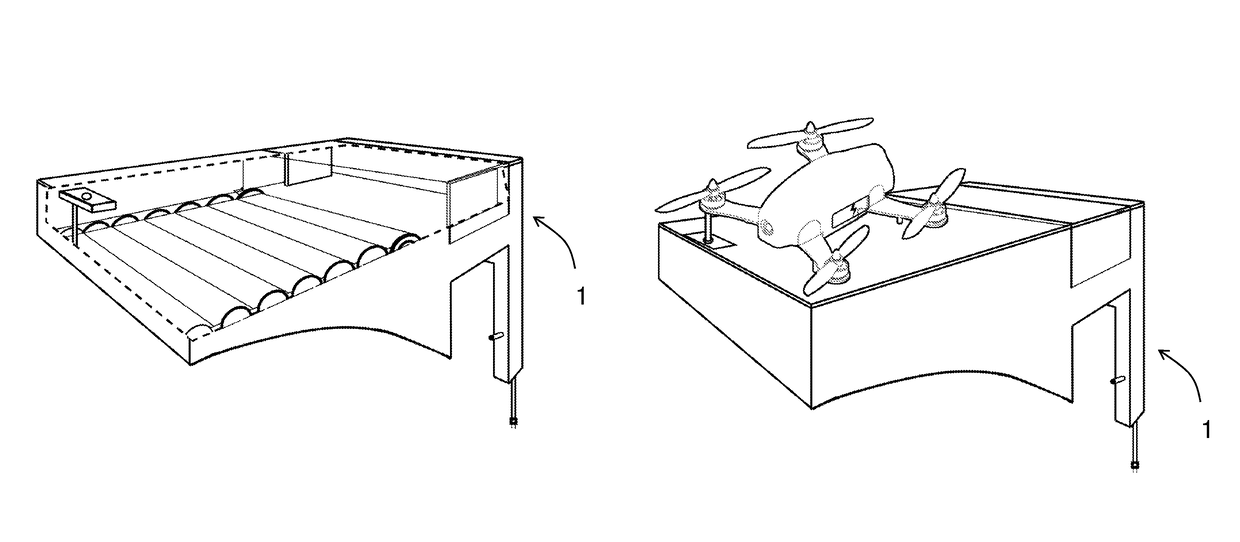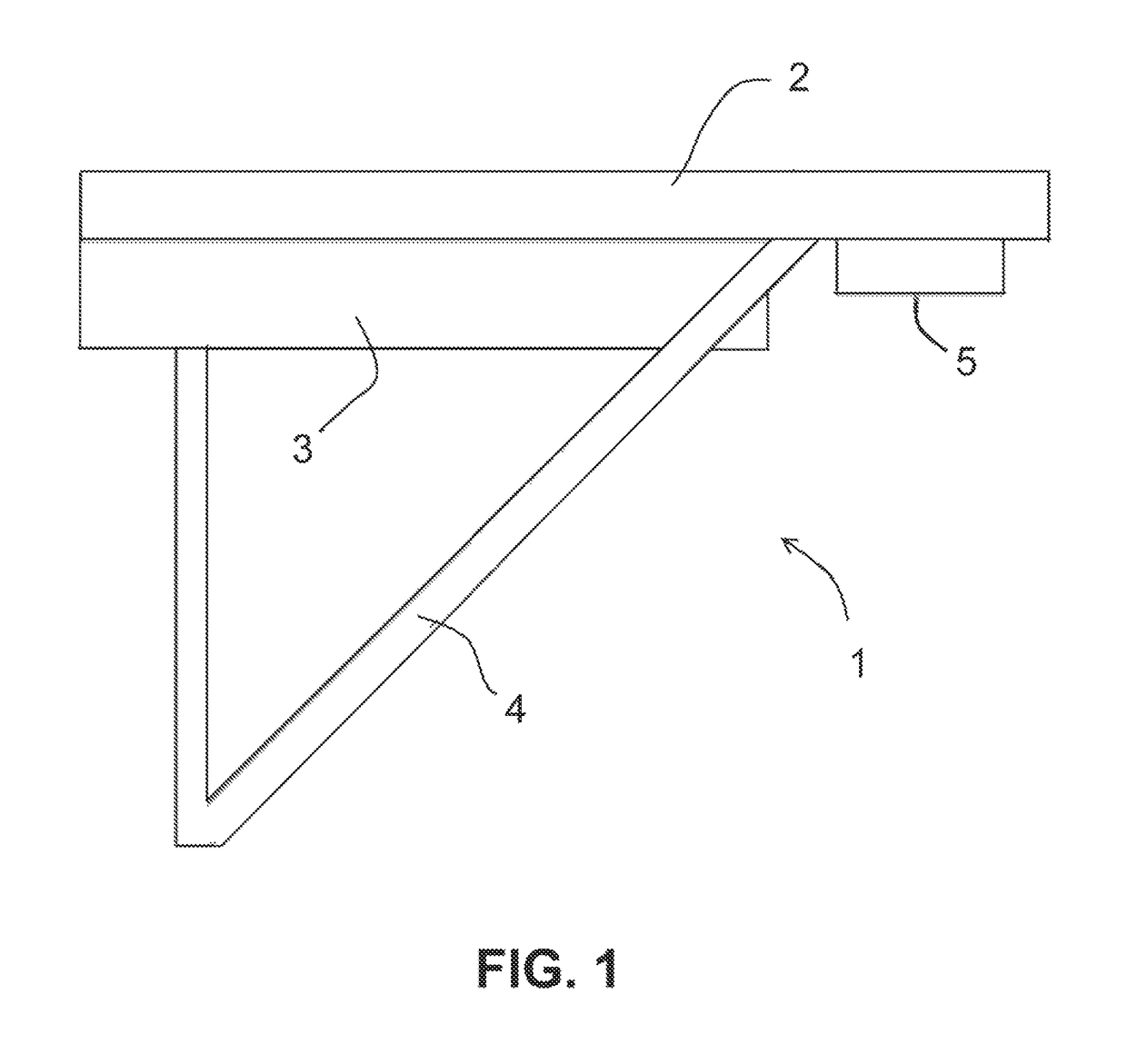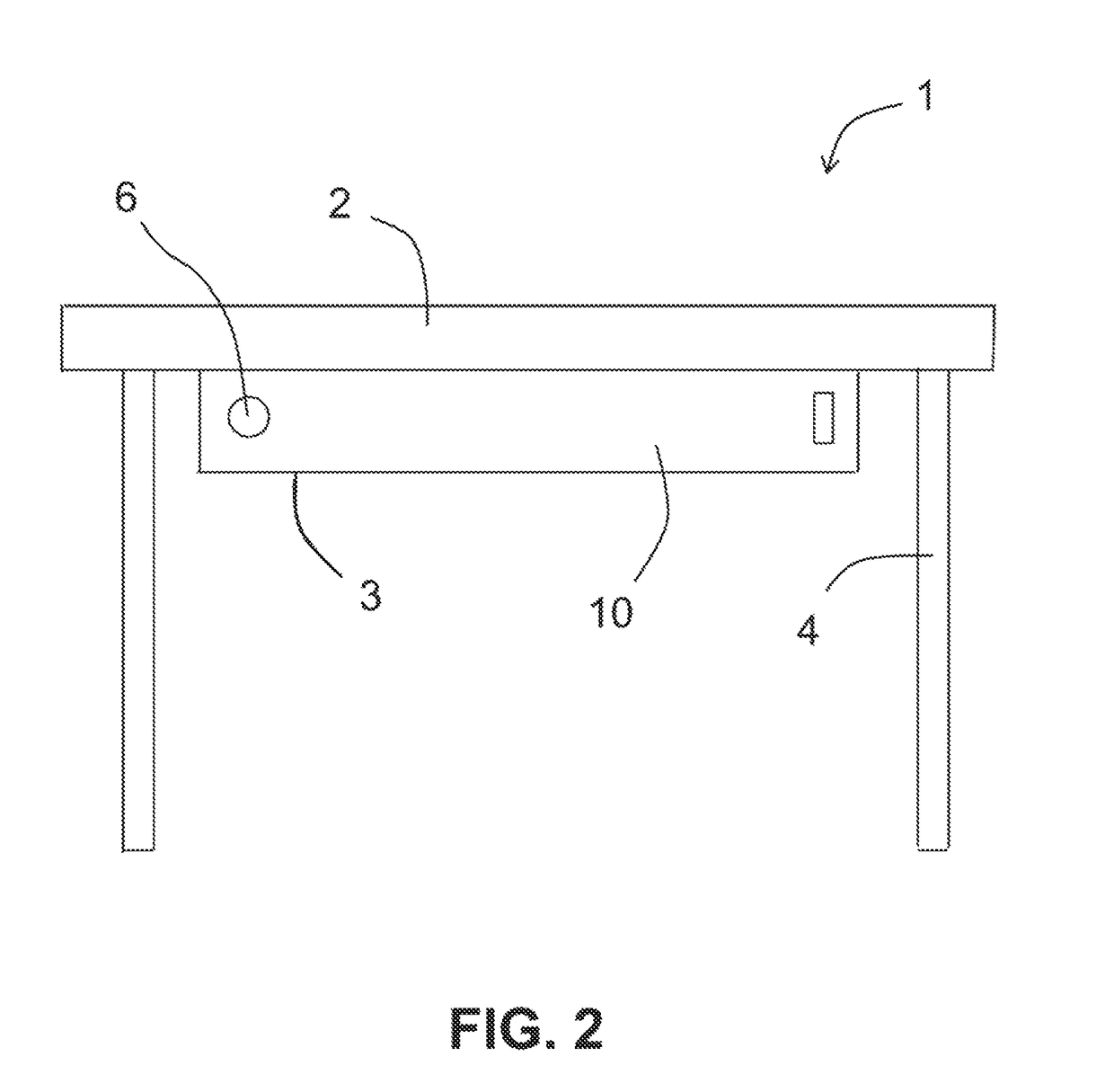Landing pad for unmanned aerial vehicle delivery
a technology for landing pads and aerial vehicles, applied in the direction of launching/towing gear, process and machine control, instruments, etc., can solve the problems of affecting the delivery of traditional parcels, lag time between deliveries, and inherent costs, so as to prevent mold growth and keep food sanitary
- Summary
- Abstract
- Description
- Claims
- Application Information
AI Technical Summary
Benefits of technology
Problems solved by technology
Method used
Image
Examples
Embodiment Construction
)
[0053]FIGS. 1, 2, 3 and 4 illustrate various viewpoints of the same landing pad 1.
[0054]FIG. 1 is a side view of landing pad 1. Landing pad 1 is designed to be inserted into a window, much like a window air-conditioner with the majority of landing platform 2 and storage compartment 3, protruding out of the window. In this way, a drone can land on landing platform 2 and deposit its package into storage compartment 3. A user can then retrieve the package via storage door 10 (see FIG. 2) which opens into the room.
[0055]Landing platform 2 and storage compartment 3 are supported by support brace 4 which can be attached to the exterior of a building. An optional transponder (not shown) can use radio frequency to emit a unique ID corresponding to landing pad 1 to aid the drone, along with GPS, in finding landing pad 1. This transponder can be housed with other electronics in electronic housing 5.
[0056]In some embodiments, storage compartment 3 includes a conveyer belt (not shown) which mo...
PUM
 Login to View More
Login to View More Abstract
Description
Claims
Application Information
 Login to View More
Login to View More - R&D
- Intellectual Property
- Life Sciences
- Materials
- Tech Scout
- Unparalleled Data Quality
- Higher Quality Content
- 60% Fewer Hallucinations
Browse by: Latest US Patents, China's latest patents, Technical Efficacy Thesaurus, Application Domain, Technology Topic, Popular Technical Reports.
© 2025 PatSnap. All rights reserved.Legal|Privacy policy|Modern Slavery Act Transparency Statement|Sitemap|About US| Contact US: help@patsnap.com



